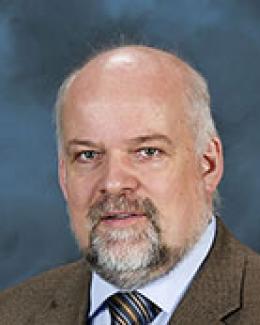ORNL's Catherine Schuman talks with Harriman High School junior Devin Sammons as he tests out a neural network training software. Credit: Abby Bower/Oak Ridge National Laboratory, U.S. Dept. of Energy
One hour. It’s not long, but it’s enough time to inspire a student.
That’s the goal of more than 40 volunteers from the Department of Energy’s Oak Ridge National Laboratory, who are making the most of 60 minute timeframes all week long by leading Hour of Code activities in 27 area schools as part of an annual, international effort dedicated to computer science education.
On Dec. 9, Catherine Schuman returned for the second year in a row to lead activities at her alma mater, Harriman High School, just a few miles from ORNL, where today she’s a world-renowned researcher studying machine learning and neuromorphic computing, an emerging field that takes inspiration from neuroscience to design energy efficient, “brain-like” computers.
More simply, “I try to teach computers how to learn,” Schuman told the students.
Scattered throughout computer science teacher Andrew Holmbeck’s classroom, the ninth through twelfth graders enrolled in Holmbeck’s Coding I class and John Daugherty’s STEM class listened as Schuman described her current job and how not so long ago, she was just like them.
In Holmbeck’s classes, students learn the fundamentals of computer science and get an introduction to the Python programming language. Schuman, who graduated from Harriman High in 2006 just before those course offerings became available, says that in addition to teaching computing concepts, one of her goals is to show students that a research career is possible.
“It’s really important to me, because I’m a local, to go out to local students and show that this is what being a scientist looks like,” Schuman said. “I do a lot of local outreach events to make sure it’s well communicated that if I can do it, you can do it too.”
Her presentation focused on machine learning and artificial intelligence, introducing students to the ways that the companies they interact with every day — from Amazon to Facebook — train vast arrays of interconnected processing nodes known as neural networks with large datasets.
Using a Google-developed machine learning program that completes a user’s drawing of a given subject, like a pig or the Mona Lisa, based on what it “learned” from other people’s drawings of that subject, Schuman gave students a close look how a pretrained neural network behaves.
“In some cases, people had done a pretty good job drawing these things, but sometimes it’s really bad,” she laughs. “The point was to show them that machine learning is only as good as the data that was used to train it.”
Before she let them test out an educational version of TensorFlow, a software platform used to train neural networks, she walked the students through the surprisingly simple math that enables pretrained neural networks to do calculations.
For Abigail Roberts, a sophomore sitting in on Schuman’s second presentation of the day, it clicked: “That’s easy math!” she said aloud, watching closely from the back of the classroom.
It’s that kind of reaction that makes the work personal for Schuman, who frequently volunteers in schools and with the local educational nonprofit Oak Ridge Computer Science Girls — not just the fact that she had a niece, a nephew and a cousin in other presentations that day.
“Even if you only reach a few of the kids there, if you’ve had some sort of impact on them, it’s really rewarding,” she said. Her ultimate hope is to take a summer high school intern from Harriman.
In his classes, Holmbeck sees the benefits of bringing in speakers like Schuman. He started doing Hour of Code activities with his students several years ago but says that since ORNL offered to send volunteers to give presentations starting in 2017 — an effort spearheaded by the Neutron Scattering Division’s Thomas Proffen — hosting guests from the lab has been his favorite part.
“What they see is how what they’re learning applies to the real world,” Holmbeck said. “Of course, computer science touches every single field, so the more exposure they can get to every kind of career and how computer science interacts with those careers is a benefit to them.”
Anyone can organize an Hour of Code event. For more information, visit hourofcode.com/us.
ORNL is managed by UT-Battelle for the Department of Energy’s Office of Science, the single largest supporter of basic research in the physical sciences in the United States. DOE’s Office of Science is working to address some of the most pressing challenges of our time. For more information, please visit https://energy.gov/science.



